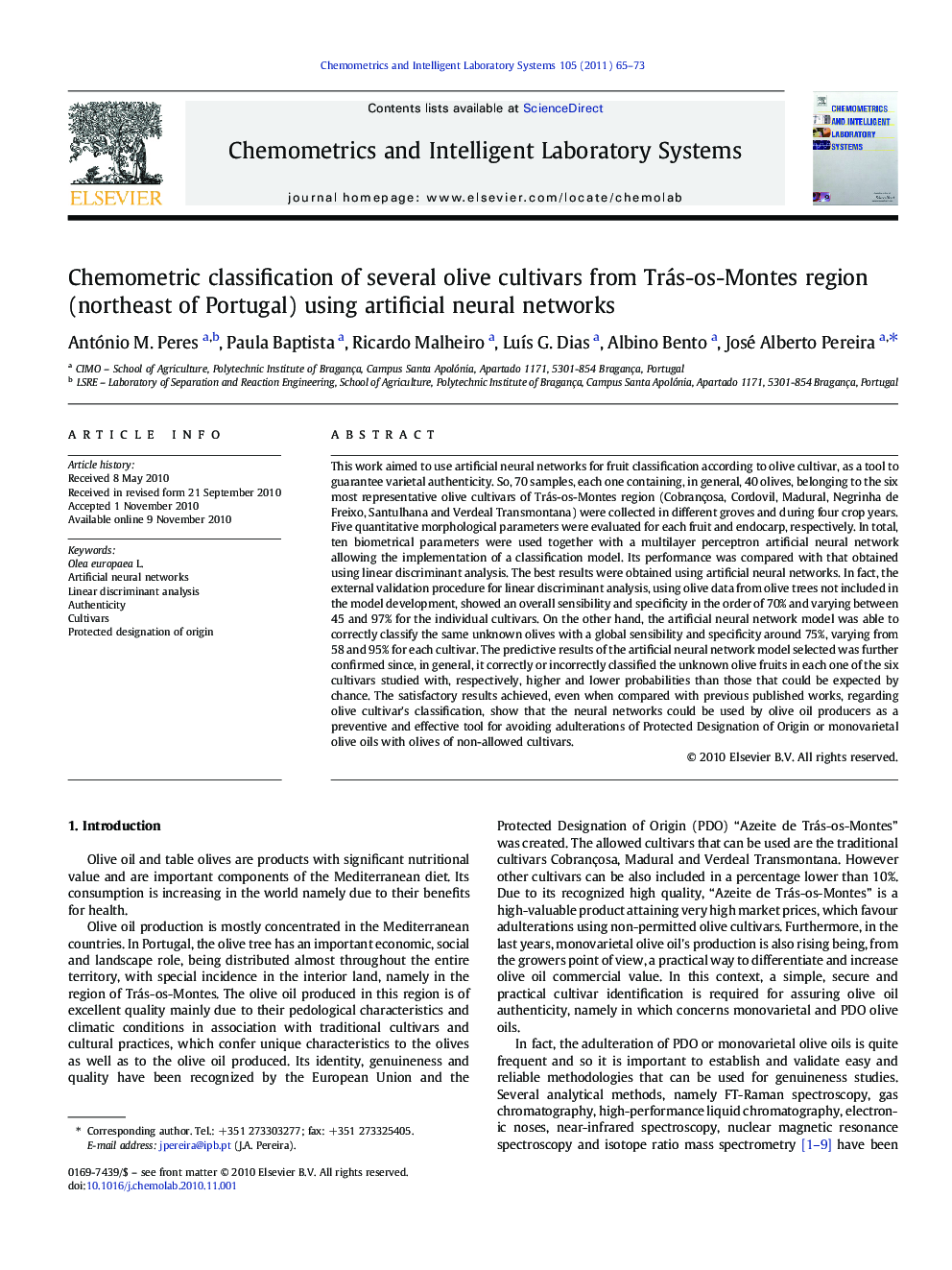| کد مقاله | کد نشریه | سال انتشار | مقاله انگلیسی | نسخه تمام متن |
|---|---|---|---|---|
| 1181275 | 962921 | 2011 | 9 صفحه PDF | دانلود رایگان |

This work aimed to use artificial neural networks for fruit classification according to olive cultivar, as a tool to guarantee varietal authenticity. So, 70 samples, each one containing, in general, 40 olives, belonging to the six most representative olive cultivars of Trás-os-Montes region (Cobrançosa, Cordovil, Madural, Negrinha de Freixo, Santulhana and Verdeal Transmontana) were collected in different groves and during four crop years. Five quantitative morphological parameters were evaluated for each fruit and endocarp, respectively. In total, ten biometrical parameters were used together with a multilayer perceptron artificial neural network allowing the implementation of a classification model. Its performance was compared with that obtained using linear discriminant analysis. The best results were obtained using artificial neural networks. In fact, the external validation procedure for linear discriminant analysis, using olive data from olive trees not included in the model development, showed an overall sensibility and specificity in the order of 70% and varying between 45 and 97% for the individual cultivars. On the other hand, the artificial neural network model was able to correctly classify the same unknown olives with a global sensibility and specificity around 75%, varying from 58 and 95% for each cultivar. The predictive results of the artificial neural network model selected was further confirmed since, in general, it correctly or incorrectly classified the unknown olive fruits in each one of the six cultivars studied with, respectively, higher and lower probabilities than those that could be expected by chance. The satisfactory results achieved, even when compared with previous published works, regarding olive cultivar's classification, show that the neural networks could be used by olive oil producers as a preventive and effective tool for avoiding adulterations of Protected Designation of Origin or monovarietal olive oils with olives of non-allowed cultivars.
Journal: Chemometrics and Intelligent Laboratory Systems - Volume 105, Issue 1, 15 January 2011, Pages 65–73